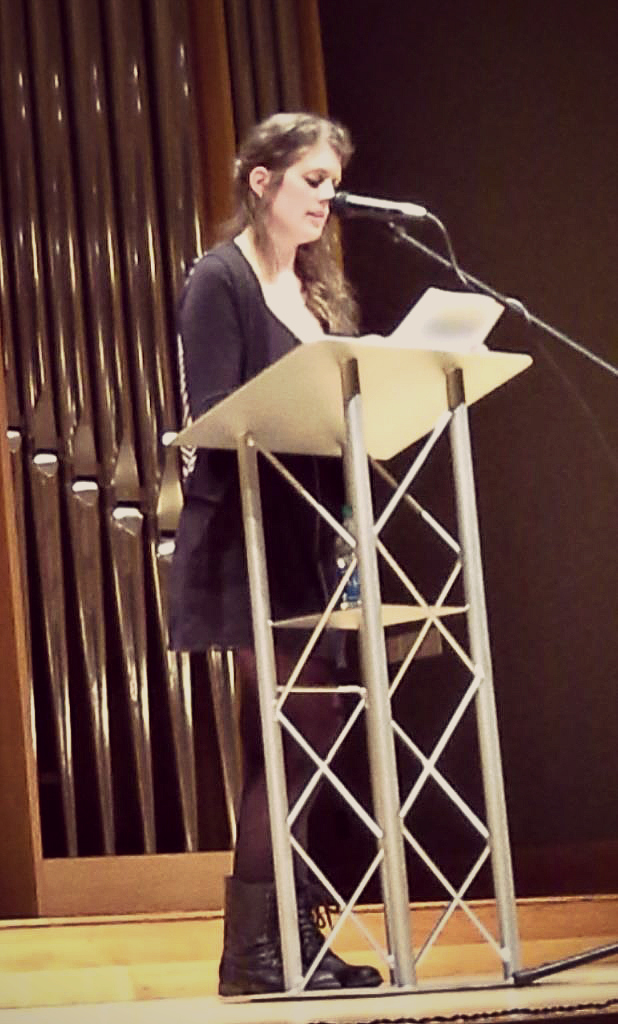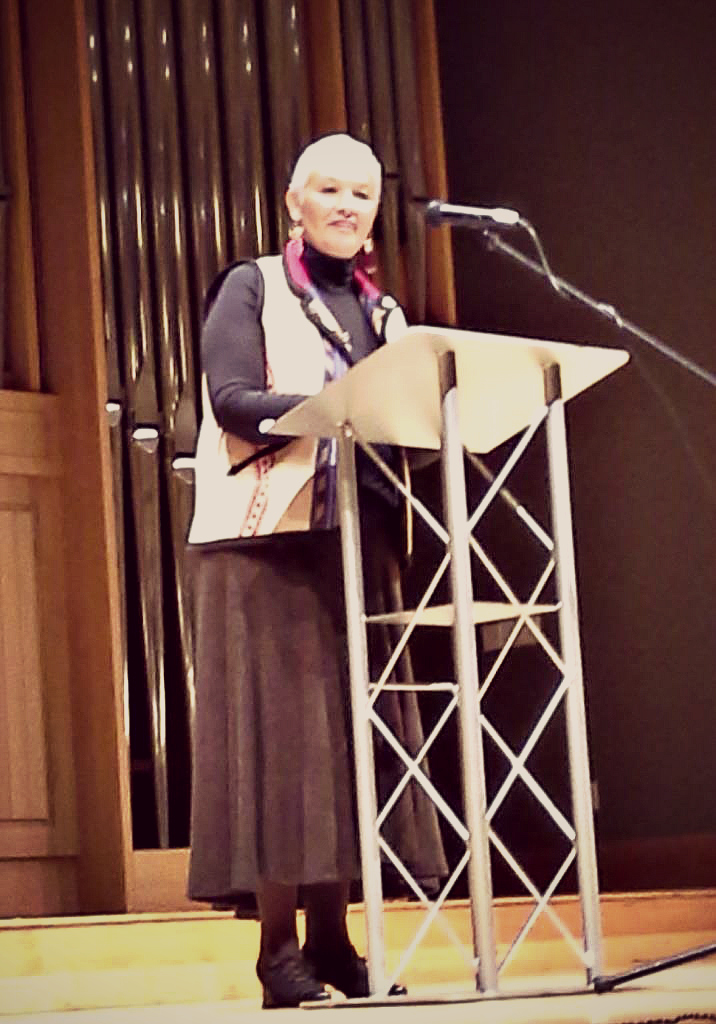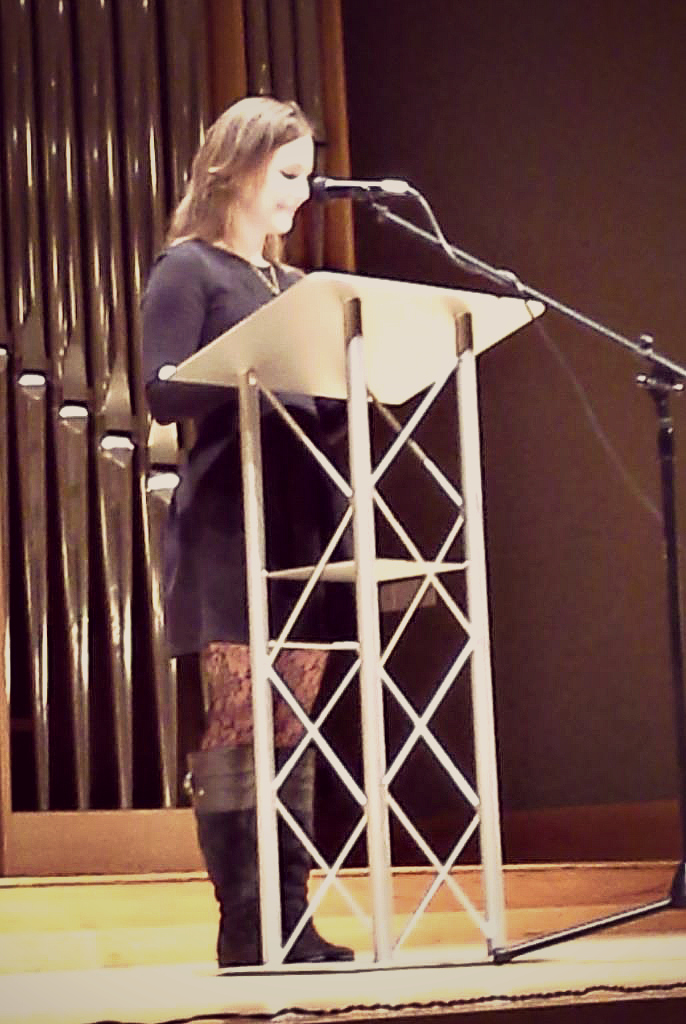~From English Department Communications Intern Kara Nosal
I have taken two creative nonfiction workshops this year. Still, because nonfiction lies in a realm somewhere between journalism and fiction, often I am confused as to what purpose creative nonfiction fulfills. On April 16th, in the Organ Recital Hall, Jayla Rae Ardelean, Susan Harness, and Jessica Hill read their Master of Fine Arts projects for the Creative Writing Reading Series. Thanks to these three readers, I began to understand that the ambiguity of creative nonfiction allowed the genre to do things that other genres couldn’t quite pull off.
Jayla Ardelean was first to read. She read a piece that came out of working in a rehabilitation center for birds. It was here where she was inspired by the Great Blue Heron. Ardelean talked about herself and her family dynamics through stories about heron sightings in “Heron Anatomy.” She did not stray from her focus, using the space on the page to describe birds in great detail. Still, listeners could peek into her personal life when her sister or mother came along on her excursions to track herons. Ardelean could report on the scientific anatomy and behavior of birds while at the same time allowing readers to invest emotionally in a story about her family.

Next to read was Susan Harness. Harness posed the question of whether or not we live in a post-prejudiced America. She provided her testimony of growing up Native American with white adoptive parents. Harness summed up her insecurities being Native American in white society by worrying that, “everyone knows what it means to be Indian more than I do.” As I was let into her inner thoughts, my emotions tangled with hers and I became invested in her struggle. Though racial prejudice is often discussed in the media these days, hearing a personal story about prejudice was more powerful to me than hearing news reports.

Jessica Hill was last to read. In her introduction I learned that she often wrote about her solo travels. Her piece focused on a trip that she took to India not long after a gang rape occurred there in the back of a bus in 2012. As Hill described her trip in detail and color, she often reverted back to internal commentary, questioning the wisdom of being alone in India during this time. For example, an iron rod was used in the assault of the victim and Hill began to note every sighting of similar rods as she journeyed. There was one on a train and one by the door of her host family’s house. Soon, she didn’t need to inform the listeners what she was reminded of each time she saw a metal rod. All she had to do was note its existence and my mind jumped to the same, shared, dark memory. Hill united the author, the rape victim, and the audience.

That night, I felt that I understood the purpose of nonfiction a little better. Nonfiction does not simply recount a true story, journalistically. It also uses the devices of fiction to take advantage of recording the vibrant characters and symbols that occur in real life. This is what makes creative nonfiction so powerful, I think. In each of the three pieces, the author’s creativity drew me in, while the truth kept me there.